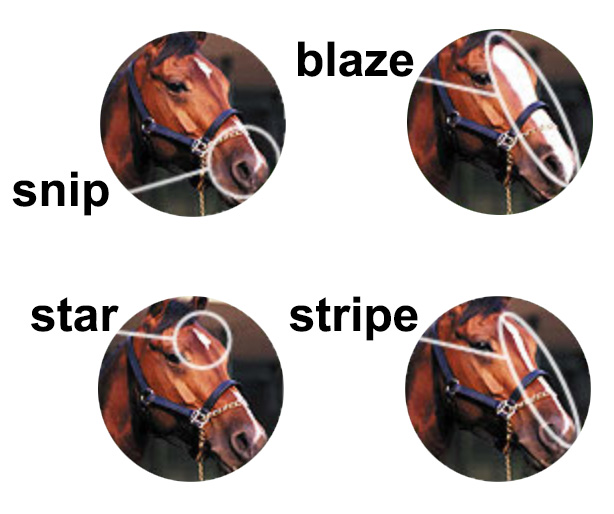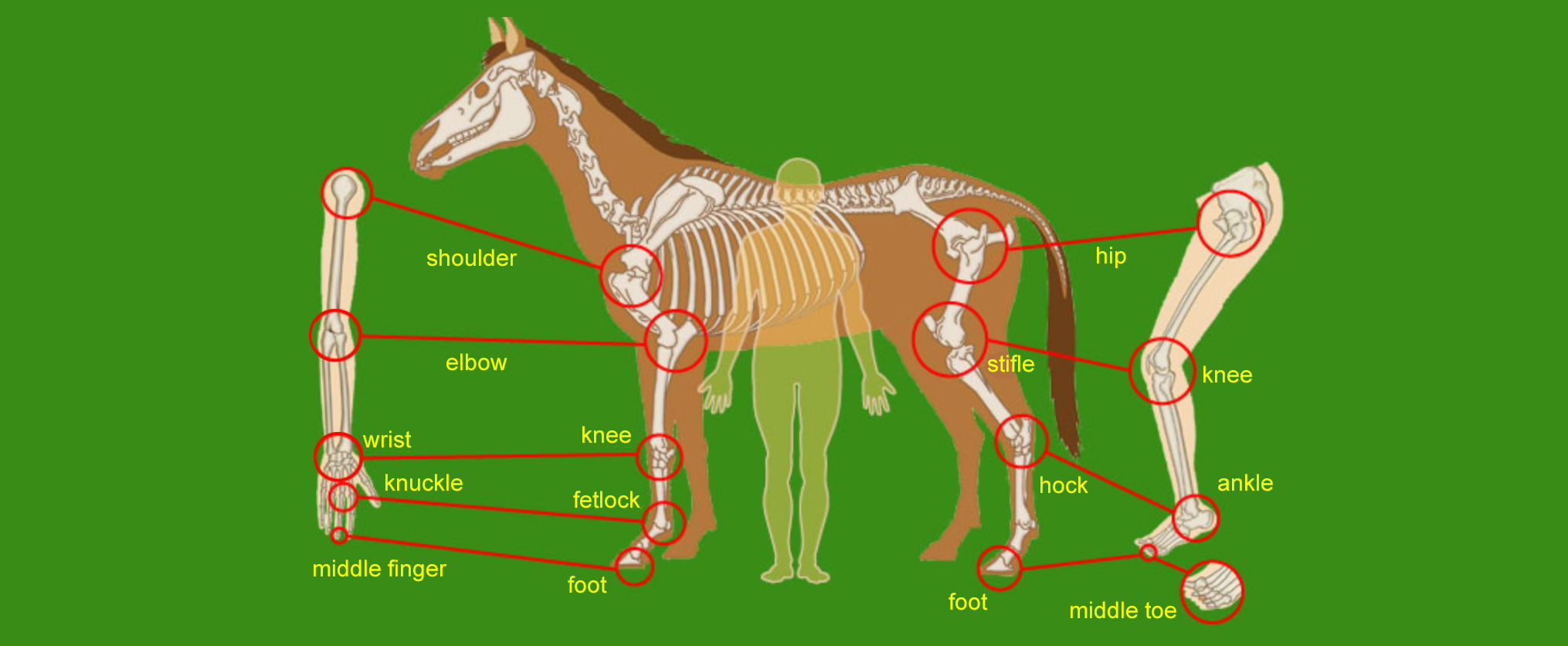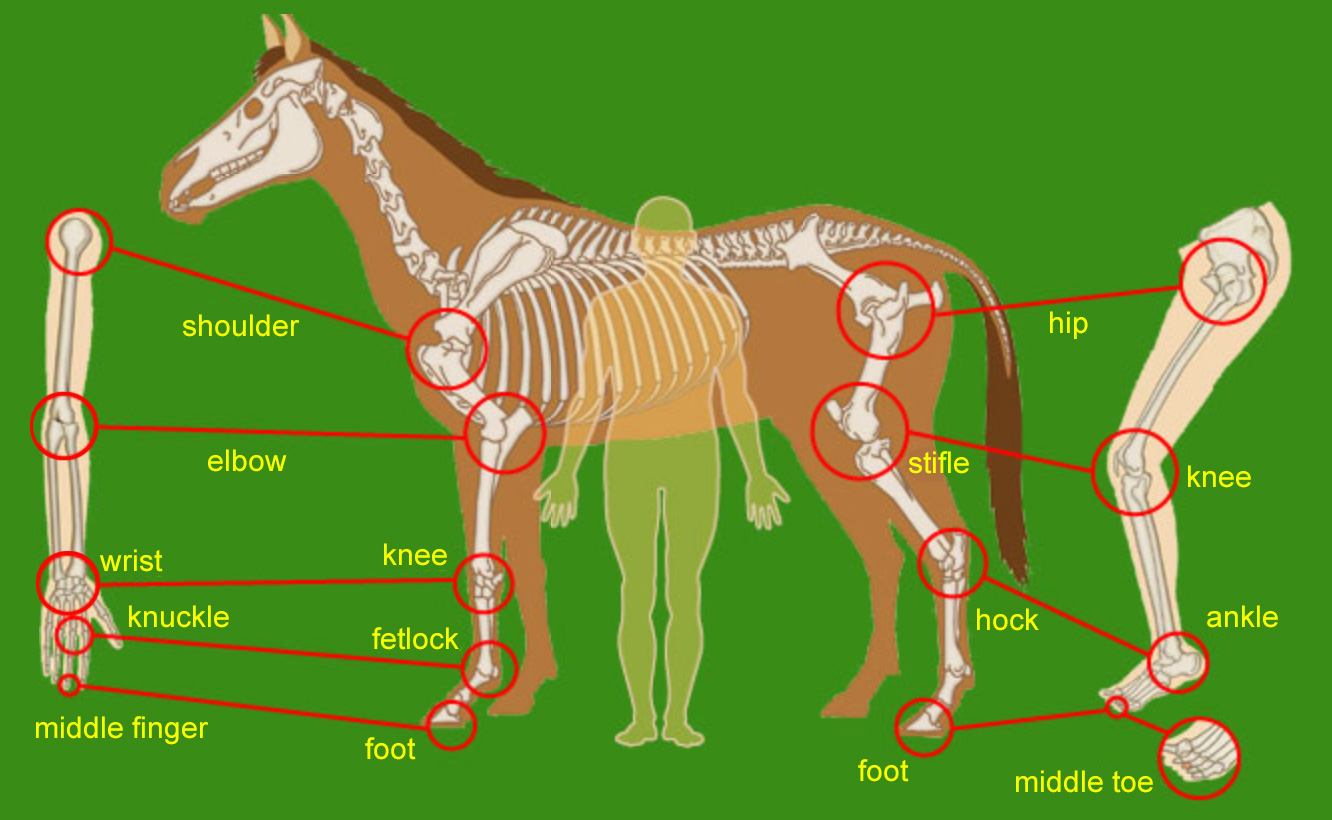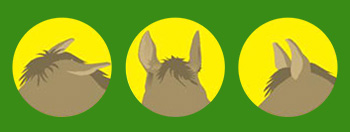

Racecourses & Entertainment
Horses possess deep brown coloured eyes about 5 cm in diameter. The position of the eyes on each side of the head gives a very wide range of vision. In fact horses have a 350 degree field of vision. The only blind spots are directly behind and in front - so remember do not startle a horse by approaching it from behind. It cannot see you and might get a fright!
Interestingly, horses cannot observe things that are close-up and directly in front of them. They observe distant objects with their heads down and near objects with their heads raised up.
The ears of a horse are extremely flexible. They twist and rotate - a bit like radar screens alerting them to any possible danger. You can read the mood of a horse by observing the position of its ears. When unhappy the ears are flattened back against the head. When happy and curious about its surroundings, the ears are pricked forward. When in doubt or unsure about something one ear will be pricked forward and the other held back.
Also, when a horse holds its tail high it indicates a good mood. When it swishes its tail from side to side it's ready for action! When a horse tilts its head towards you, you might think it is about to bite you, but in fact it might just be showing friendship.
Horses are vegetarian animals and an average thoroughbred consumes about 15 kg of fodder, or approximately 3% of its body weight daily. They also consume 25 litres of water daily - ten times more than humans! Racehorses eat less than horses that are free to graze and have a regulated diet. Aside from grass they are fed oats, maize and barley to keep them in tip-top shape.
Horses are a bit like children when it comes to enjoying snacks. They love mint candies, and carrots and like to ask for these treats. So when they let out a quick, deep sounding neigh - remember to reward them!
When taking a snack a horse might try to lick your hand or even appear to bite you. Or he may turn his head towards you to show friendship and be playful.
Horses can sleep both standing and lying down. When in unfamiliar places or sensing possible danger they will sleep while standing - ever ready to take flight. But if secure - they will lie down.
Horses' hooves are 3 mm thick and require frequent trimming to ensure comfort. Horse shoes protect the hooves.
Markings that appear on the body of a horse are hereditary and enable us to tell individual horses apart. The pattern of hair whorls found on the forehead of a horse is unique to each individual and comparable to fingerprints in humans.
A horse's height is measured in "hands". A hand measures 10 cm and an average horse stands 16 hands high, or approximately 160 cm. Average weight is 1000 pounds or 450 kg. A horse's lifespan is in the region of 25 years.
Horses have four types of movement: walking, trotting, cantering and galloping. Galloping is the fastest motion, cantering more relaxed and trotting is the pace that follows the walk.
Horses increase their speed from canter to gallop by pushing back harder with their powerful hind legs and extending their stride. The horse is built so that its forelegs can sustain 60% of its body weight, and when racing, all of the weight can be shifted onto one leg, so that you will see three legs off the ground when the horse is in full flight.
All the racehorses in Hong Kong are thoroughbreds. These are the fastest and most valuable horses. The origin of the thoroughbred dates back to the 17th and 18th centuries when three horses from the Middle East were shipped to England for breeding purposes. These were the Byerley Turk, the Darley Arabian and the Godolphin Arabian. All thoroughbreds today can be traced back to these three horses.
Since a horse cannot observe things that are close-up and right in front of it, or see things directly behind it - it is safest to approach a horse from sideways on. First, stroke the neck and then give a gentle pat, talking softly and calmly to show friendship.
Horses have a highly tuned sixth sense. They can sense danger and can judge the mood of a jockey. If they don't like the jockey they might disobey instructions.
Horses are mainly friendly and approachable animals that communicate well with us. We can befriend them by learning more about their special nature, habits, and needs.






